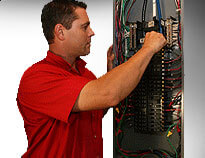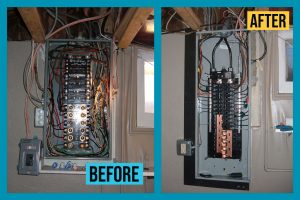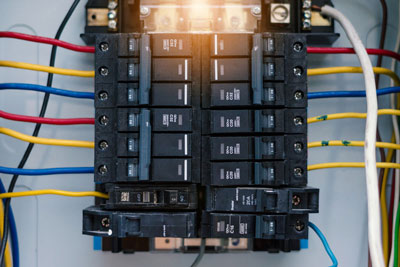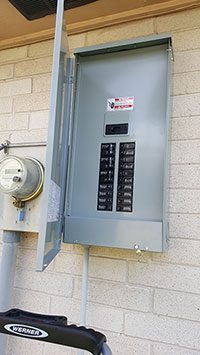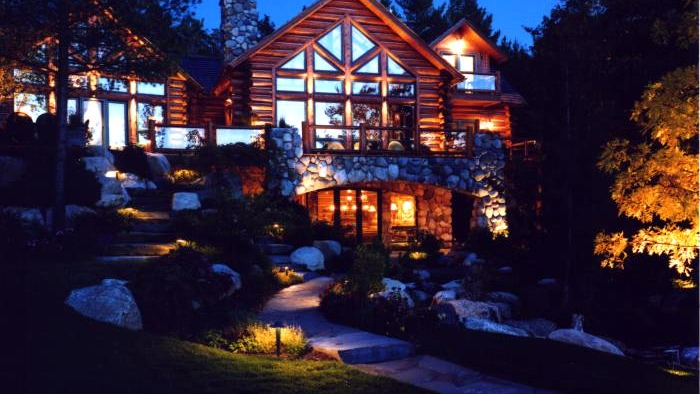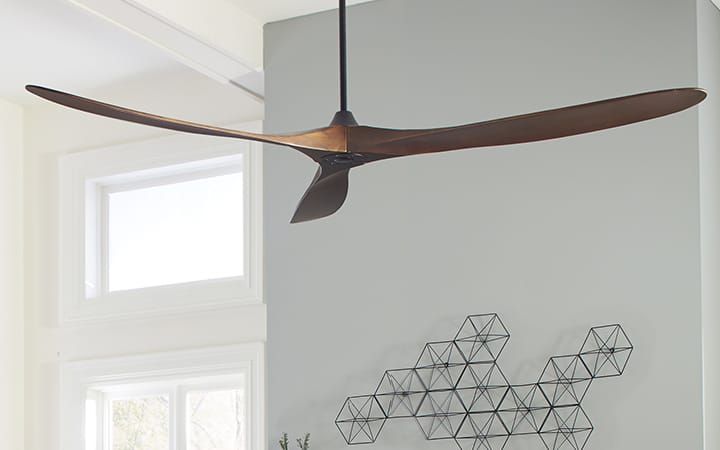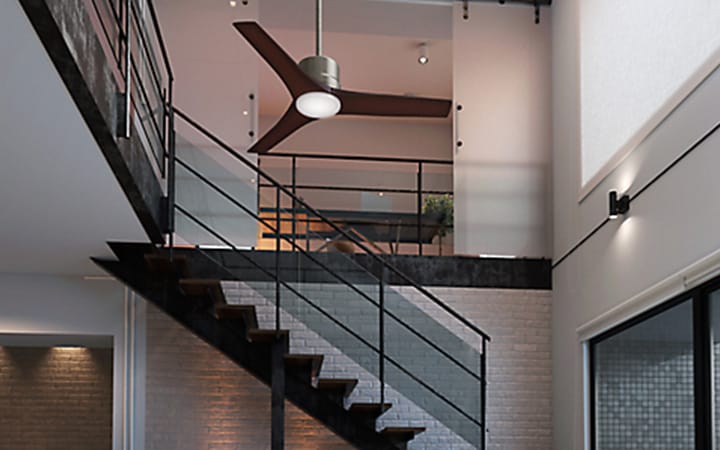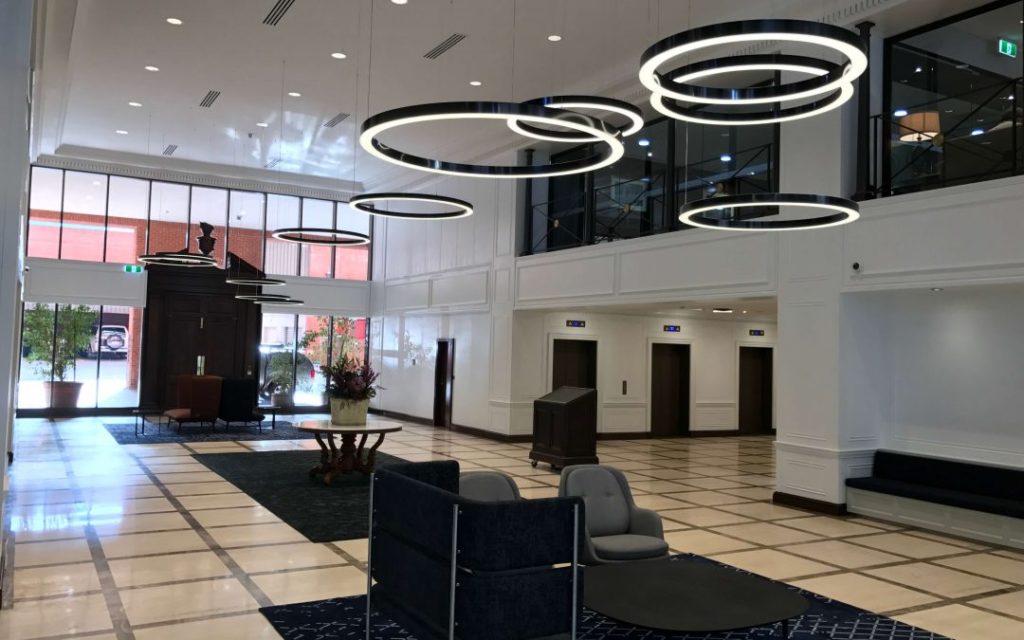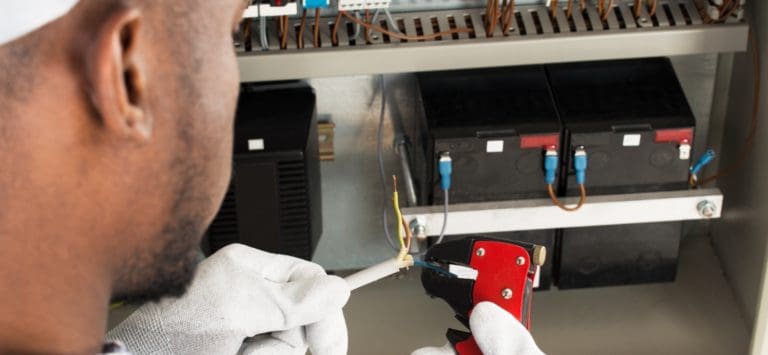BASIC SKILLS FOR ELECTRICAL PROJECTS
Take the confusion and risk out of DIY electrical projects. Get a good grounding in how your wiring works, what tools you need, how to make connections, how to work with wire and cable, how to avoid the most common errors, and most of all, how to be completely safe around electricity.
Learn how to make electrical improvements that are safe and code compliant with the videos, photographs, and expert instruction in this class. You’ll learn about circuits, circuit breakers, and other parts of your home’s wiring system, like wires, cables, boxes, switches, and outlets. Learn how to replace or install cable, boxes, and devices and make tight, safe connections.
Here’s what you’ll learn:
Tips and techniques for working with cable, boxes, switches, and outlets so you’ll have the skill and knowledge to complete safe and code compliant electrical projects
How to identify the three types of conductors (wires) in your home’s electrical system: hot wires, neutral wires, and equipment ground (ground) wires
How to install electric boxes in open walls and how to add a remodeling box in a finished wall
Which tools you’ll need to work on your home electrical projects
How to turn off the power and make sure it’s off before you start working on any wiring
What a basic house circuit is and how to recognize the physical parts of the circuit
How to identify the three types of conductors (wires) in your home’s electrical system: hot wires, neutral wires, and equipment ground (ground) wires
How to interpret the color coding of the wires in your home
And much more!
Who should take this class:
DIY home renovators who want to complete their own electrical work
Homeowners who are looking for expert advice and tips before modifying or updating electrical projects in their house
People who want to save money by doing their own basic electrical projects
Beginners who are looking for expert advice before beginning electrical projects
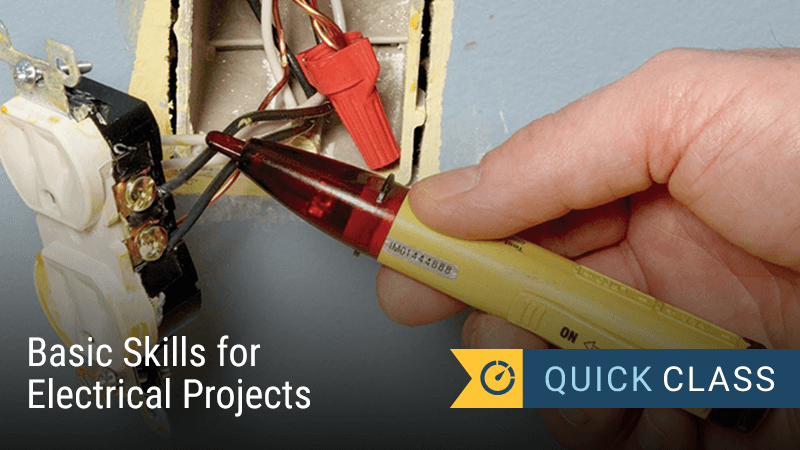
Electrical Tips & Advice
Home electrical fires account for over 50,000 fires in the US each year. The Electrical Safety Foundation International reports that electrical fires cause more than 500 deaths, 1,400 injuries, and over a billion dollars in property damage. Older homes are particularly at risk. Because over half of the homes in the United States were built before 1973, this is a real concern.
Knob and Tube Wiring
This type of wiring was used from the 1800’s to the 1930’s in homes. Wires are run through ceramic tubes (or knobs) to prevent contact with wood framing. However, this type of wiring is now considered a fire hazard because it is not a grounded system. If your home has knob and tube wiring, it is highly recommended that you have your home re-wired.
Arc Faults
When any electricity is unintentionally released from home wiring or cords, it is known as an arc fault. Arc faults can be especially dangerous because the electricity released can cause the surrounding material to catch fire.
Pinched wires – From a chair sitting on an extension cord or wires bent sharply
Overheated wires or cords – Too many lights or appliances connected to one circuit (your fuse box or circuit breaker should trip) Improper electrical connections – Loose connections in an electrical light switch or outlet
No Ground Fault Circuit Interrupters
Any electrical outlets that could come into contact with water should have ground fault circuit interrupters (GFCIs) installed. These outlets improve safety by constantly monitoring the flow of electricity in and out of the circuit. If the returning current differs even a small amount (like from coming in contact with water), the GFCI will shut of the electric current. This helps prevent deadly electric shocks and electrocution. For maximum safety install GFCIs in bathrooms, the kitchen, laundry room, outside and anywhere else an outlet could come in contact with water.

Electrical
Overview
Working with electricity can be dangerous. Engineers, electricians, and other professionals work with electricity directly, including working on overhead lines, cable harnesses, and circuit assemblies. Others, such as office workers and sales people, work with electricity indirectly and may also be exposed to electrical hazards.
Electricity has long been recognized as a serious workplace hazard. OSHA’s electrical standards are designed to protect employees exposed to dangers such as electric shock, electrocution, fires, and explosions.
Construction
Electricity has long been recognized as a serious workplace hazard. OSHA’s electrical standards are designed to protect employees exposed to dangers such as electric shock, electrocution, fires, and explosions. Includes references that provide information related to electrical in construction including OSHA’s electrical construction regulations, hazard recogition, possible solutions and additional resources.
Hazard Recognition
Many workers are unaware of the potential electrical hazards present in their work environment, which makes them more vulnerable to the danger of electrocution. The following hazards are the most frequent causes of electrical injuries: contact with power lines, lack of ground-fault protection, path to ground missing or discontinuous, equipment not used in manner prescribed, and improper use of extension and flexible cords.
Possible Solutions
A variety of possible solutions may be implemented to reduce or eliminate the risk of injury associated with electrical work. Examples of solutions include the use of insulation, guarding, grounding, electrical protective devices, and safe work practices. This page provides information that may aid in controlling electrical hazards in the workplace.
Electrical safety
Electrical safety is incredibly important and we all have a part to play.
We use electricity for lots of menial tasks, like turning on a light switch, making toast and charging our phones, but we also use it to power important things like medical equipment, traffic control and street lights. We might take it for granted, but electricity is not something to mess around with – it can kill.
We all have a responsibility to use electricity safely. Every householder in NSW is legally obliged to keep their home safe, including the way it uses electricity. The same goes for business owners – they are responsible for the electrical safety of their employees and everyone else on premises.
Risks and injuries
Faulty appliances, damaged or worn power cords, power points and household wiring, electrical appliances coming in contact with water and downed power lines can all cause electric shocks. While some shocks are a minor ‘tingle’, others can be much more serious.
Electrical installation work
By law, any electrical installation work must be done by a licensed electrician. Electricians are required to provide you with a uniquely numbered Certificate of Compliance Electrical Work (CCEW) to show that the work has been tested and complies with the regulations.
Safety labels for electrical goods
Certain electrical products and appliances must be certified and approved against Australian standards before they can be sold in NSW. This includes electric room heaters and power tools that run from mains power.
Home electricity tips
We use electricity every day and often take it for granted — but you have to take care when handling it. We’ve got some useful hints that will help keep you safe around electricity.
Power points and power boards
Running too many appliances off one power point by piggy-backing double adaptors, or connecting power boards together, can overload the circuit and lead to overheating, damage to equipment, or even cause a fire in your home
Follow these safety tips when using power points and power boards:
Don’t overload individual power points.
Don’t plug in more than two cords to a double adaptor — use a suitable adaptor board instead.
Keep all electrical connections out of areas that may become wet due to watering or extreme weather conditions.
If there is no permanently-installed safety switch, use a portable type at the power point.
Never use an extension cord that has a three-pin or piggy-back plug at each end.
Never replace fuse wire or plug-in circuit breakers with larger sizes.
Keep combustible material, such as paper, plastic and structural metalwork,150mm away from bulbs.
Never modify lighting outlets, plugs or cords.
Check that you have working smoke alarms in your home.
Tingles and shocks
It is believed that many electric shocks go unnoticed and unreported in Australia each year. Electric shocks and tingles — slight electric shocks — happen for a variety of reasons but can sometimes be an indication that there’s an underlying electrical fault that requires urgent attention.
Safety switches
Safety switches detect small amounts of constant electrical fault current leaking to earth and quickly switch off the electricity, minimising electric shock and reducing the risk of fire.
